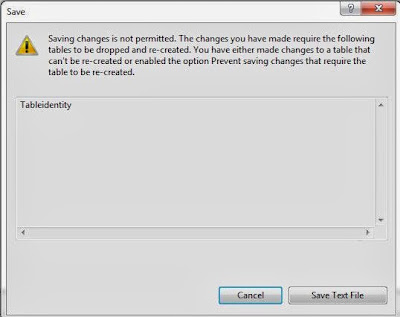I was working on Report where i have to display all month Names in order by of Months if User selectes more than 12 months then it will display like screen below.
Next january month it is showing after december which means Next year.
So, I Handled this in my sql only in my query i ordered by month and year.
below is the demonstration.
--First we will create a table
Create TABLE [dbo].[EmployeeMonth]
(
[EmpID] [nvarchar](10) NULL,
[Name] [nvarchar](10) NULL,
[MonthName] [nvarchar](10) NULL,
[Year] nvarchar(10)
)
GO
INSERT INTO [dbo].[EmployeeMonth]VALUES(1,'A','March','2013')
INSERT INTO [dbo].[EmployeeMonth]VALUES(2,'B','May','2013')
INSERT INTO [dbo].[EmployeeMonth]VALUES(3,'C','December','2013')
INSERT INTO [dbo].[EmployeeMonth]VALUES(4,'D','November','2013')
INSERT INTO [dbo].[EmployeeMonth]VALUES(5,'E','January','2013')
INSERT INTO [dbo].[EmployeeMonth]VALUES(6,'F','June','2013')
INSERT INTO [dbo].[EmployeeMonth]VALUES(7,'G','February','2013')
INSERT INTO [dbo].[EmployeeMonth]VALUES(8,'H','April','2013')
INSERT INTO [dbo].[EmployeeMonth]VALUES(9,'I','October','2013')
INSERT INTO [dbo].[EmployeeMonth]VALUES(10,'J','August','2013')
INSERT INTO [dbo].[EmployeeMonth]VALUES(11,'K','July','2013')
INSERT INTO [dbo].[EmployeeMonth]VALUES(12,'L','September','2013')
INSERT INTO [dbo].[EmployeeMonth]VALUES(5,'E','January','2014')
INSERT INTO [dbo].[EmployeeMonth]VALUES(7,'G','February','2014')
GO
select * from [EmployeeMonth]
Output
EmpID Name MonthName Year
1 A March 2013
2 B May 2013
3 C December 2013
4 D November 2013
5 E January 2013
6 F June 2013
7 G February 2013
8 H April 2013
9 I October 2013
10 J August 2013
11 K July 2013
12 L September 2013
5 E January 2014
7 G February 2014
Now in order to get order by based on month and year to display in a report
below is the query
select * from [EmployeeMonth]
order by YEAR,DATEPART(mm,CAST([MONTHName]+ ' 1900' AS DATETIME)) asc
Output
EmpID Name MonthName Year
5 E January 2013
7 G February 2013
1 A March 2013
8 H April 2013
2 B May 2013
6 F June 2013
11 K July 2013
10 J August 2013
12 L September 2013
9 I October 2013
4 D November 2013
3 C December 2013
5 E January 2014
7 G February 2014
Write the query in you report and you will achieve the Output as shown in the above screenshot.










